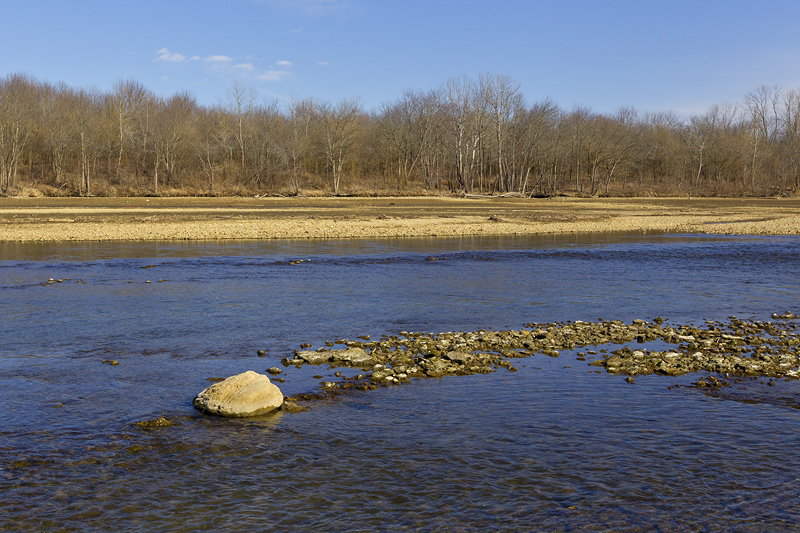
Feb. 25, north end of Deer Creek Reservoir
Canon 1D Mark IV, Canon 16-35 f2.8 L II lens at 35mm
f10, 1/1000th sec., ISO 400
Impatiently Waiting for Spring with the Canon 16-35
f2.8L II lens
at Deer Creek, March, 2013
So far 2013 has been a bleak one for bird photography.
I haven't had the time or money to do any traveling yet, few winter opportunities
have arisen, and spring is slow in coming. Hopefully all that will change
very soon. The liittle time I have had for photography has mostly been
limited to playing around with wide angles. I wasn't very happy with my
decision to trade the Canon 24 f1.4L II lens for the 24-70 f4 L IS lens.
I went to a local camera store and tried out some wide angles on my 1D
Mark IV and settled eventually on the much maligned Canon 16-35 L II lens.
At the apertures I will use most often it really looked the best of the
bunch. Whether I'll still feel the same way if and when I get a full
frame camera is doubtful, but for the time being I do plan on using 1D
Mark IV cameras for a while longer since I think it is the best camera
at the moment for my bird photography. I am very happy with the 16-35 f2.8
L II on this camera from about the 18 or 19mm range or so through to the
35mm end giving me a nice moderately wide to medium range and more flexiblity
that the fixed 24mm. I'm definitely hanging on to my 14mm lens since this
lens is very weak at 16mm. With a busy concert and reheasrsal schedule
and few opportunities to test the lens out with sunlight actually shining,
I headed to the nearby Deer Creek Wildlife Area.

Feb. 25, north end of Deer Creek Reservoir
Canon 1D Mark IV, Canon 16-35 f2.8 L II lens at 35mm
f10, 1/1000th sec., ISO 400
When the sun is out, the north end of the Deer Creek Reservoir gets nice afternoon light. On this particular day there were already plenty of Killdeers that had returned. Less conspicuous on these rocks were some Wilson's Snipes that may have overwintered in the area.
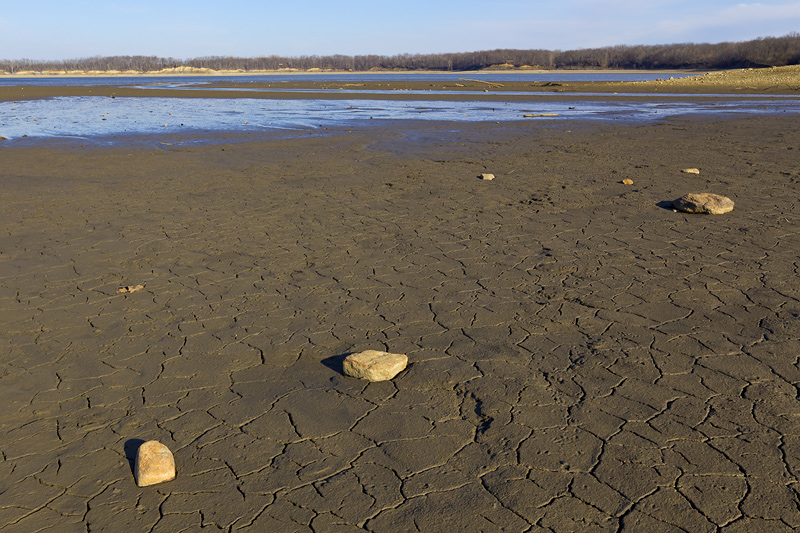
Feb. 25, southwest corner of Deer Creek Reservoir
Canon 1D Mark IV, Canon 16-35 f2.8 L II lens at 25mm
f11, 1/400th sec., ISO 400
The 16-35 f2.8 L II is at its best in the middle of its
range and I'm much happier with this zoom than any of the 24 to somethings
that I tried. Although too distant to view here, this southwestern
corner of the reservoir attracts massive numbers of puddle ducks after
the major thaws. On Feb. 25 there were thousands present including
a Eurasian Wigeon. Later in March the reservoir froze again and those numbers
weren't seen again.
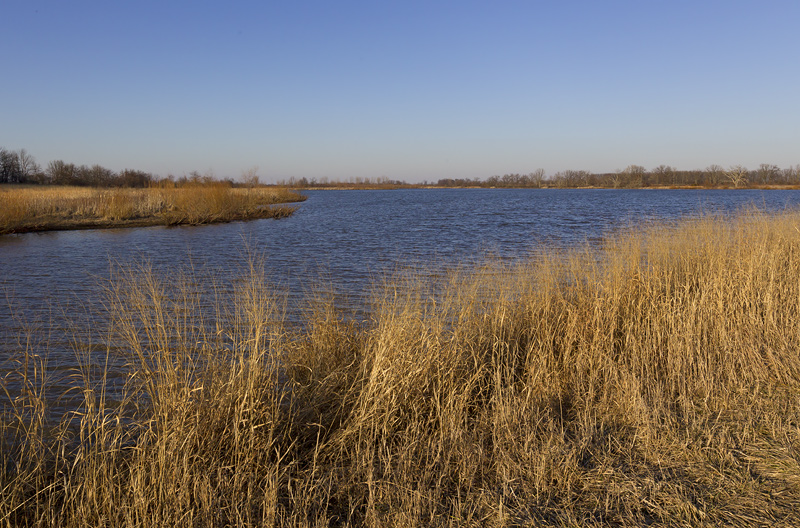
Feb. 25, middle wetland tract at Deer Creek Wildlife
Area
Canon 1D Mark IV, Canon 16-35 f2.8 L II lens at 23mm
f11, 1/640th sec., ISO 400
Lots of fine details on the lower corners is something
I have become very picky about with wide angles. Nothing shows that off
more than grass. When viewed at 100% this lens again shined in that department
in the above photo. This middle wetland area also held a large number of
distant ducks. Highlights on this particular day in the distance and not
visible here were 2 Red-necked Grebes.
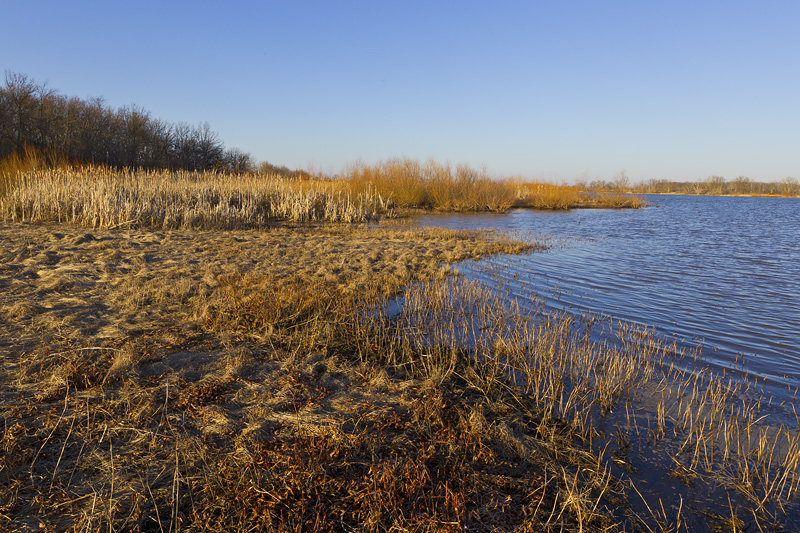
Feb. 25, middle wetland tract at Deer Creek Wildlife
Area
Canon 1D Mark IV, Canon 16-35 f2.8 L II lens at 18mm
f11, 1/250th sec., ISO 400
18mm is about the limit of what I would want to willingly
use at the wide end of the lens. Keeping the finest details out of the
corners helps here.
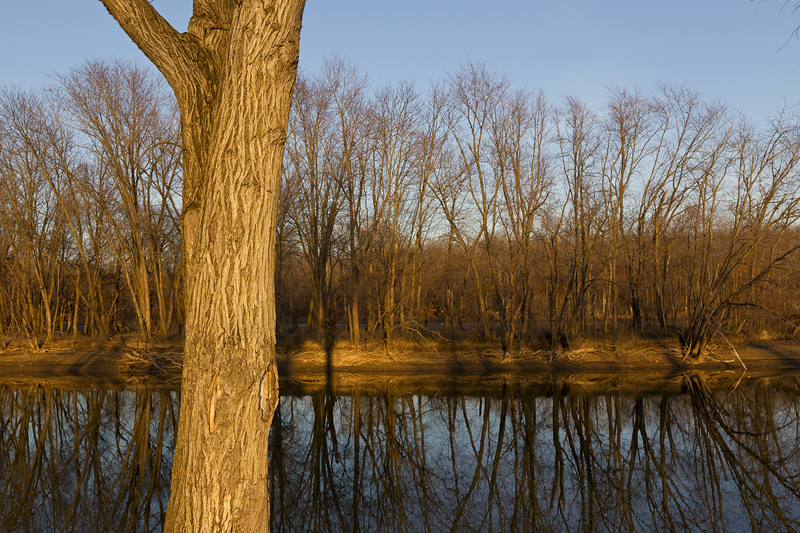
Feb. 25, Deer Creek at north end of reservoir
Canon 1D Mark IV, Canon 16-35 f2.8 L II lens at 27mm
f11, 1/200th sec., ISO 400
The 28mm range of this lens is also excellent with nice
saturated colors and contrast.
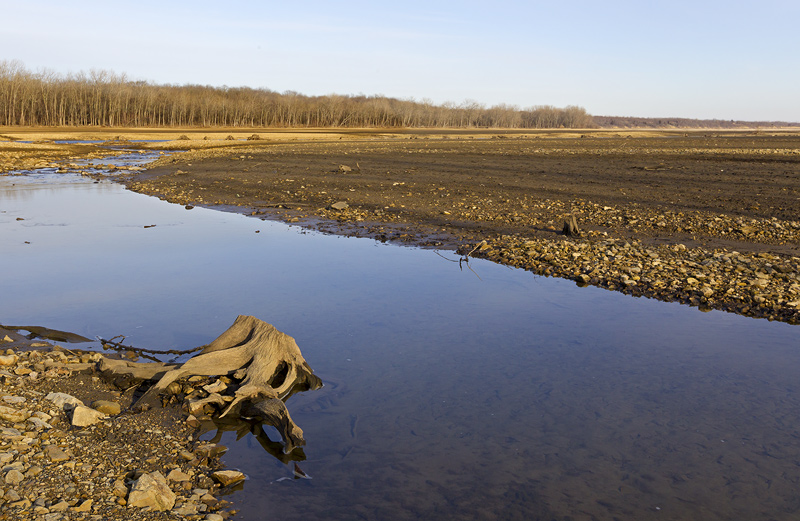
March 4, north end of Deer Creek Reservoir
Canon 1D Mark IV, Canon 16-35 f2.8 L II lens at 28mm
f11, 1/250th sec., ISO 400
The following week was colder and the reservoir didn't
thaw out until the late afternoon. I was hoping to photograph some birds
such as Song Sparrows and Red-winged Blackbirds, but they weren't being
very vocal with the temperature barely above freezing. Water levels were
lower than the previous week.
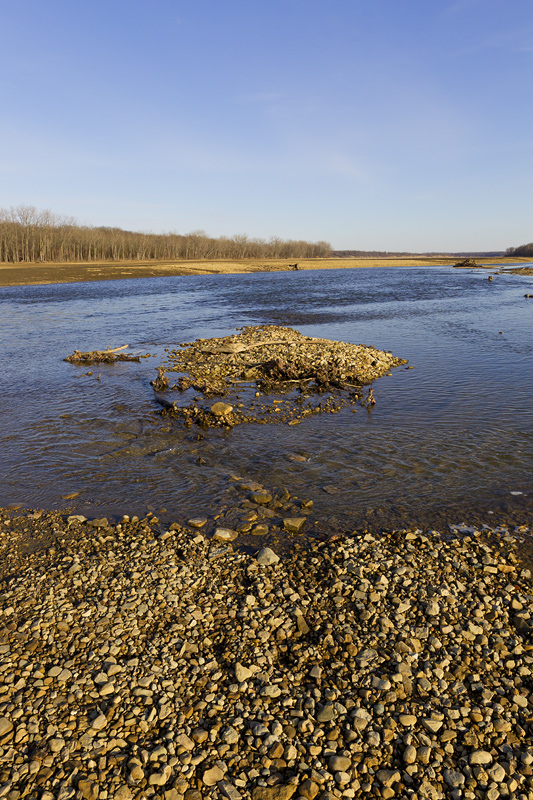
March 4, north end of Deer Creek Reservoir
Canon 1D Mark IV, Canon 16-35 f2.8 L II lens at 19mm
f11, 1/400th sec., ISO 400
When stopped down to f11 the lens is sharp in the corners
at 19mm on the 1D4, maybe not quite as excellent as the 24mm range, but
still very good. Although I didn't see them until I was practically right
there, that little island held 3 Wilson's Snipes. They quickly flushed
before I even saw them.
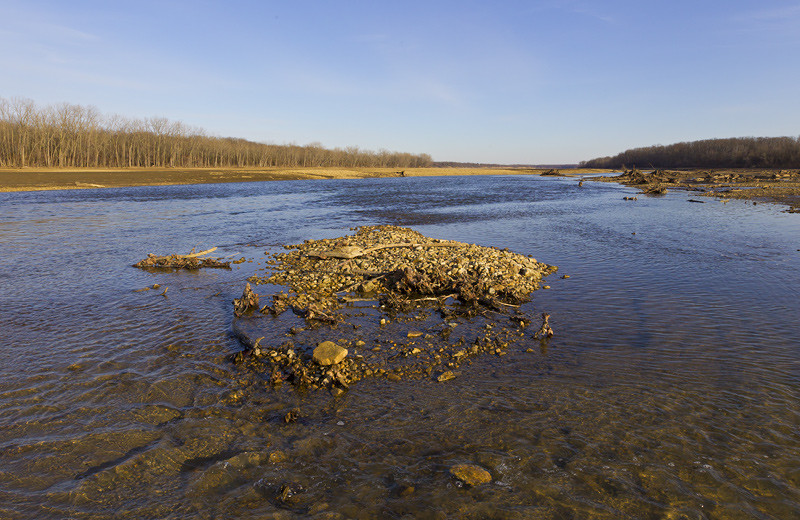
March 4, north end of Deer Creek Reservoir
Canon 1D Mark IV, Canon 16-35 f2.8 L II lens at 16mm
f11, 1/320th sec., ISO 400
Here is the lens at 16mm at its widest. With moving water
in the foreground corners it is acceptable, but otherwise I would be better
off backing off and zooming in a bit or grabbing my 14mm lens. There is
also very noticable barrel distortion at 16mm which was corrected here.
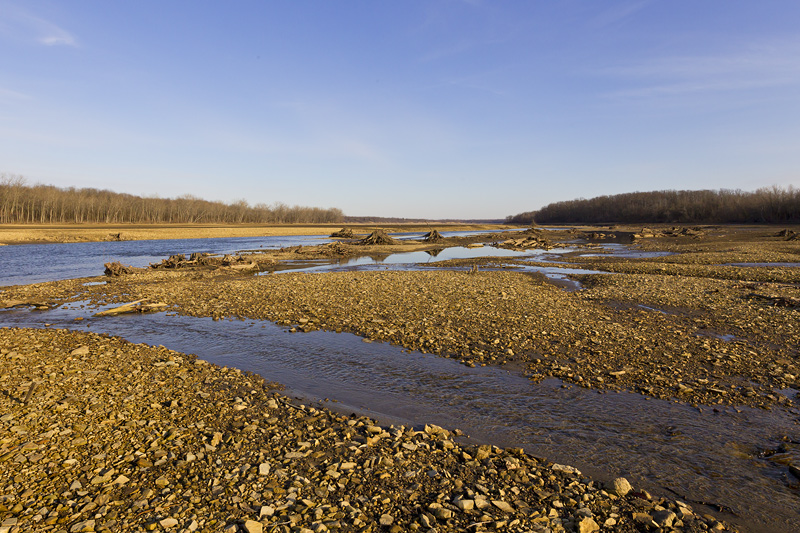
March 4, north end of Deer Creek Reservoir
Canon 1D Mark IV, Canon 16-35 f2.8 L II lens at 19mm
f11, 1/400th sec., ISO 400
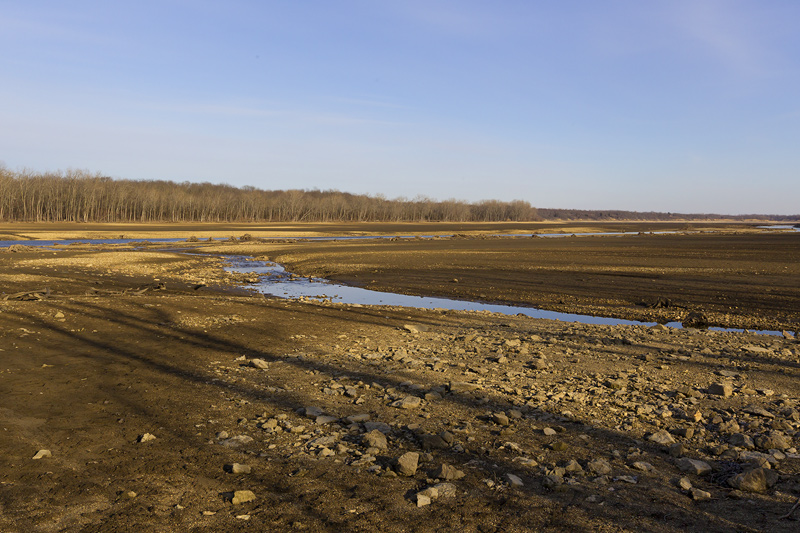
March 4, north end of Deer Creek Reservoir
Canon 1D Mark IV, Canon 16-35 f2.8 L II lens at 28mm
f11, 1/400th sec., ISO 400
Hopefully a fruitful spring for bird photography is right around the corner both here in Ohio and also on a couple of planned trips. I look forward to pulling out this lens this spring and during my travels and hope that the time spent learning its strong and weak points pays off in the future.
update : By the end of 2013 I gave up on this lens
and switched back to single focal length wide angles. In 2014 I added a
full frame Canon 6D and later a 1DX to my kit and Canon introduced the
new 16-35 f4L IS. This new zoom, although a stop slower is much better
in the corners than the f2.8L II lens and sets a standard in ulta-wide
zooms. It is also less expensive and offers Image Stabilization making
it much better for this type of photography. Unless you absolutely need
that wide f2.8 aperture I see no reason to buy this lens at this time.
At 16mm the new f4 lens is sharper in the corners on the full frame Canon
6D than the older f2.8II is in the corners of the Canon 1D MarkIV with
the outer third cropped out. Of course, on the 1D4 the new f4L IS lens
is spectacular.